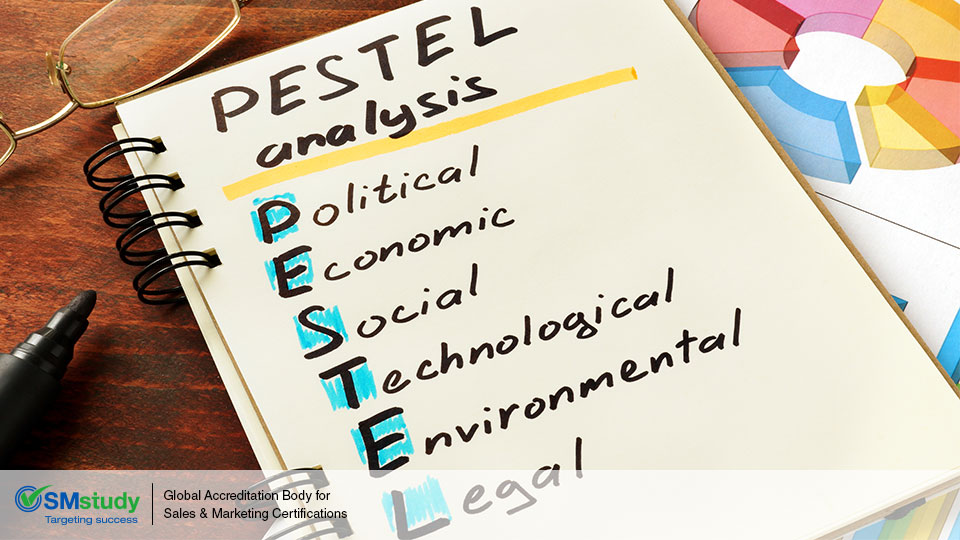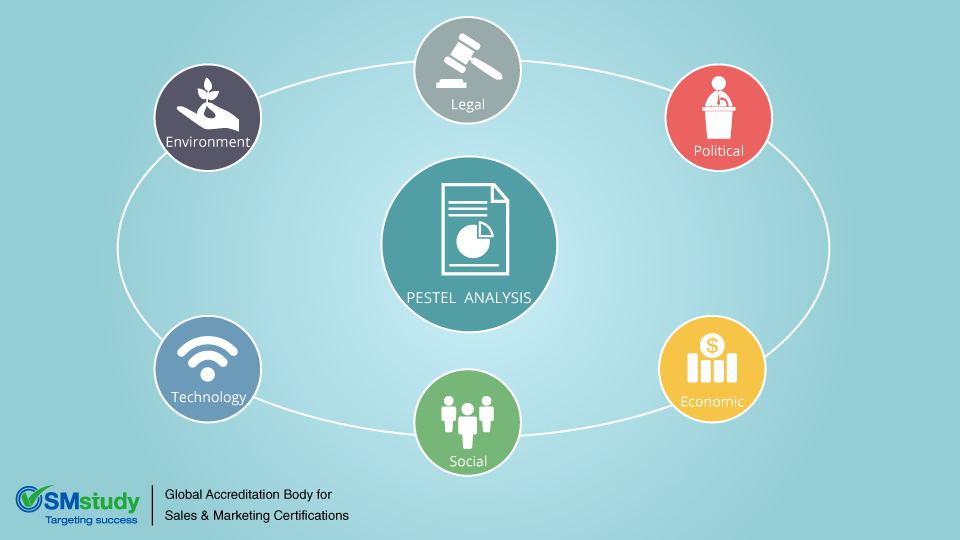As Philip Kotler said, “A company’s marketing environment consists of the actors and forces outside of marketing that affect marketing management ability to build and maintain successful relationships with target customers.” There are various factors influencing an organization’s marketing activities. Some of these factors are beyond the control of an organization and have impact on the overall industry, so a company needs to mould itself accordingly.
PESTEL (or PESTLE) analysis is one of the frameworks that can be used to monitor the macro-environmental factors and measure their impact on the business. There are six factors in PESTEL analysis, namely, Political, Economic, Social, Technological, Environmental and Legal. With the help of this framework, opportunities and threats can be analyzed and corrective steps can be taken at the correct time. Let’s discuss about all the six factors in detail.
1. Political Factors:
The political factors reflect the impact of the political and government system on the industry. The location of factories, transportation taxes, foreign trade policy, labour law, etc. have to be in line with policies of the ruling party. Organizations must consider the political factors in order to measure the industry attractiveness.
2. Economic Factors:
Factors contributing to the economic structure of a country have a major impact on an industry. These factors may include interest and inflation rates, exchange rate, economic growth, disposable income of the target segment, etc. Increase or decrease in the interest rates may be one of the strongest factors that help an organisation decide whether or not to move ahead with an investment decision.
3. Social Factors:
Such factors basically throw light on the value and culture of the society an organization chooses to address. The average age of the target segment, their disposable income, their tastes and preferences, their culture, their attitude, etc. impact an organization and its products & services. These factors help an organization decide whether its products would be acceptable in the society and if yes, then to what extent. For example, if a society has large number of senior citizens, most probably, it would be beneficial for an organization to come up with products that largely targets senior citizens.
4. Technological Factors:
The level of technological advancement and the R&D efforts are reflected through these factors. The level of technological awareness helps a marketer understand which technology will prevail and which shall soon become obsolete; thereby helping the organization gain profitability by product or process innovation.
5. Environmental Factors:
These are the ecological factors that impact an organization. The levels of pollution, deforestation, frequency of weather changes, etc. are some of the ecological factors which need to be addressed. For example, the automobile manufacturers continuously work upon the vehicles to reduce emission so that their automobiles don’t contribute in increasing the pollution level.
6. Legal Factors:
Every company has to adhere with the legal and regulatory framework that exists in the market. Companies need to adhere to the laws and regulations that exist in their markets, irrespective of how restrictive they may be. For example, a law of mandatorily wearing helmet gives rise to an increased demand of helmets, thereby boosting helmet manufacturers.
PESTEL analysis comprises of all important macro-environmental factors and helps an organization measure the opportunities and threats from each. This framework is highly beneficial for all organizations, especially, to the new entrants.


